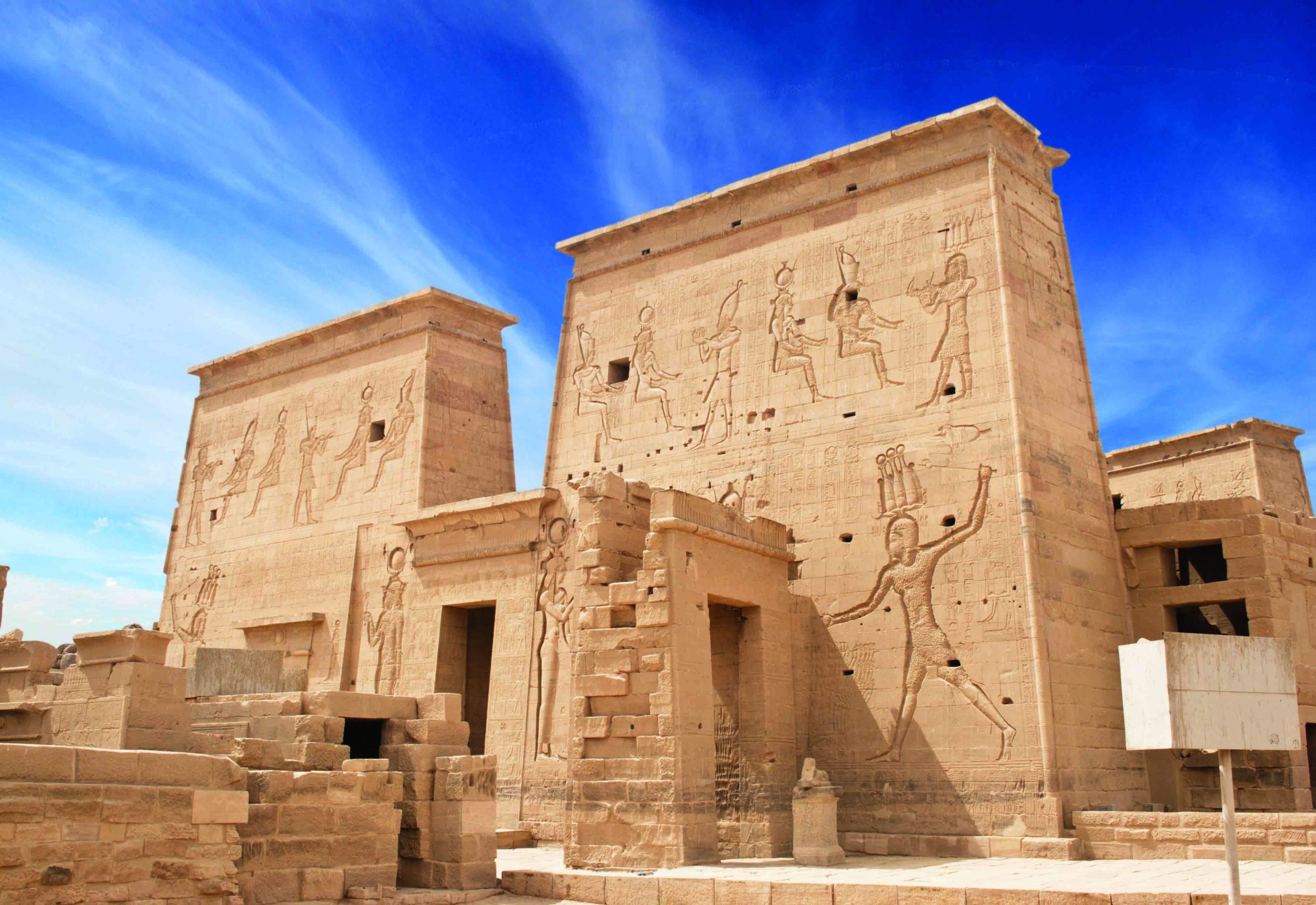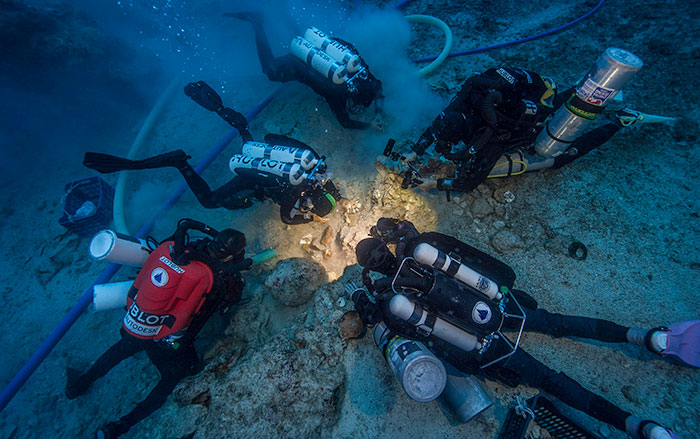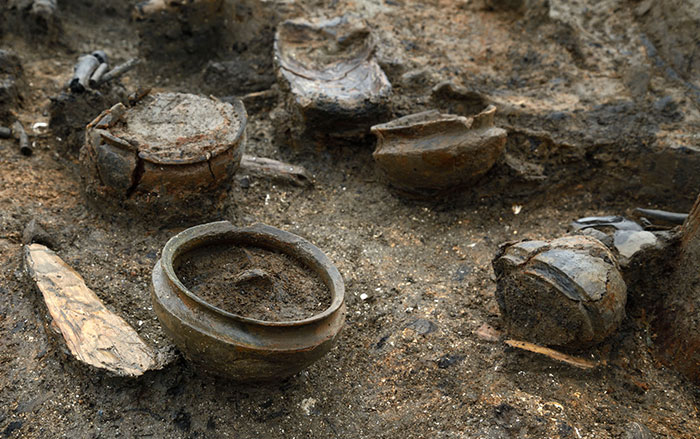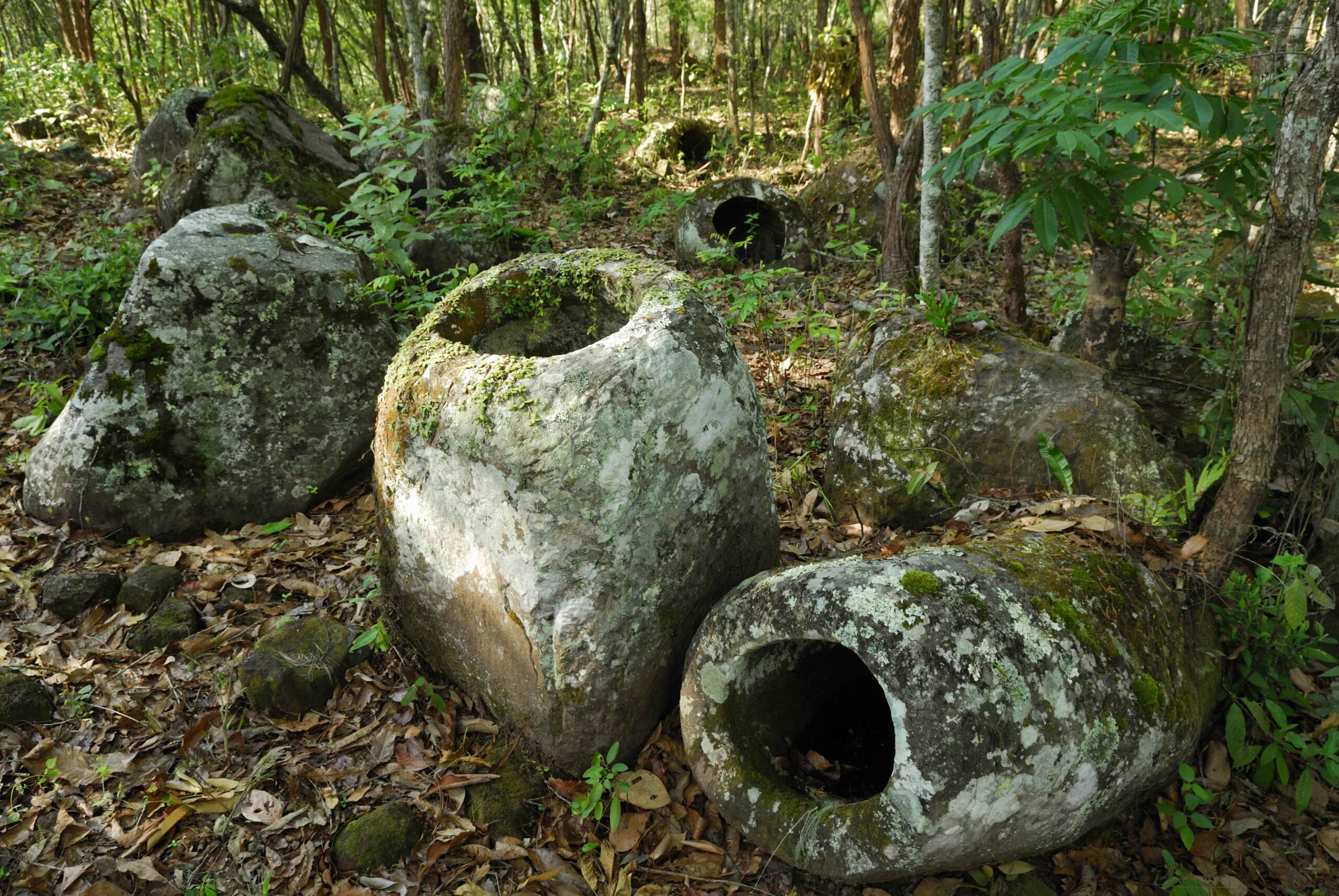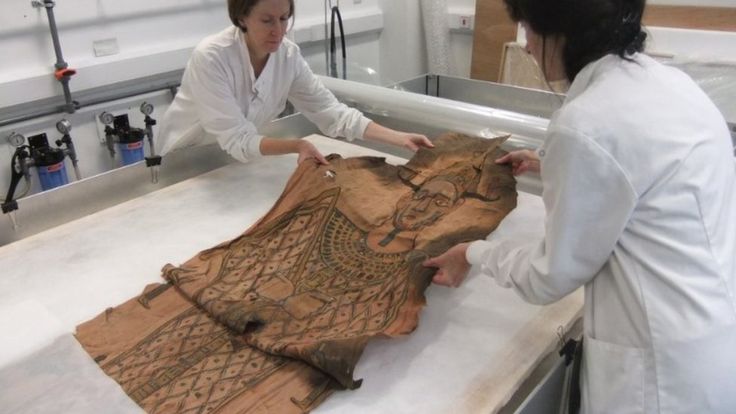
EDINBURGH, SCOTLAND—BBC News reports that a full-length mummy shroud has been found wrapped in brown paper in the collections of Scotland’s National Museums by Margaret Maitland, senior curator of ancient Mediterranean collections. It depicts the deceased as the god Osiris, and identifies him as the son of a Roman-era official named Montsuef, and his wife, Tanuat, both of whose deaths were recorded in 9 B.C. A curator’s note, placed in a Second World War service envelope, identified the contents of the parcel as an ancient Egyptian artifact from a tomb that was used for more than 1,000 years in what is now Luxor. Conservators humidified the shroud’s brittle linen fibers before beginning to unfold it, a process that took almost 24 hours. “Before we were able to unfold the textile, tantalizing glimpses of colorful painted details suggested that it might be a mummy shroud,” Maitland said, “but none of us could have imagined the remarkable figure that would greet us when we were finally able to unroll it.” For more, go to “Egypt’s Immigrant Elite.”



